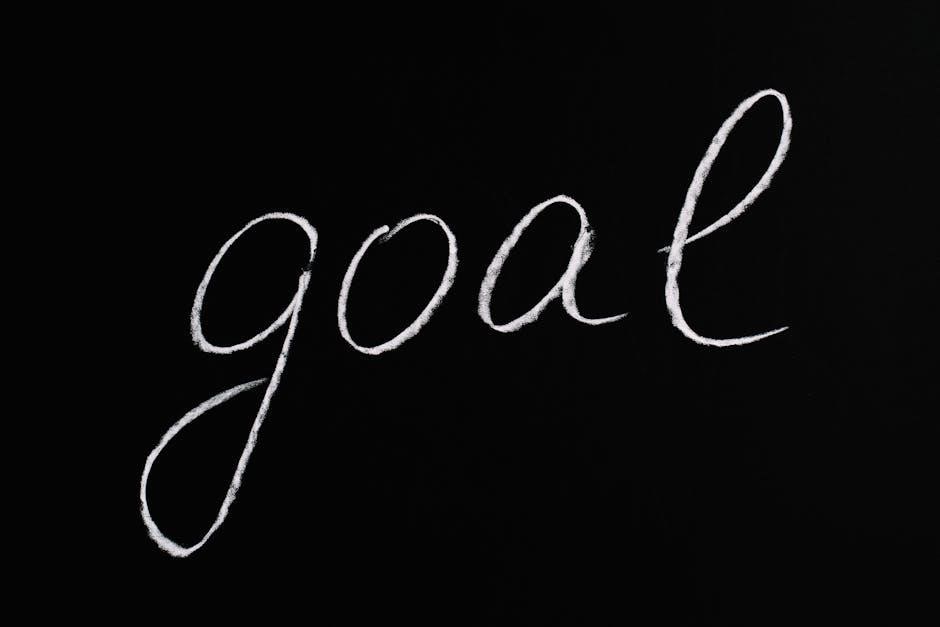10 yard zero target pdf
- by antonina

The 10-yard zero target provides a method for quickly establishing a preliminary zero for rifles, particularly AR-platform firearms. It’s especially useful in confined spaces, where longer-distance zeroing isn’t practical. The target facilitates achieving a 50/200 yard zero without needing a full shooting range.

Understanding the 50/200 Yard Zero Concept
The 50/200 yard zero is a ballistic concept where a firearm’s sights are adjusted so that the bullet’s trajectory intersects the line of sight at both 50 yards and approximately 200 yards. This creates a relatively flat trajectory within that range, minimizing the need for significant holdover or adjustments when engaging targets at varying distances. It’s particularly common for AR-15 platforms chambered in 5;56mm, where the bullet path crosses the line of sight twice due to its upward and downward arc.
Achieving this zero involves understanding the height over bore (the distance between the center of the barrel and the center of the optic) and how it influences the bullet’s initial trajectory. At closer ranges, the bullet will impact below the point of aim because the barrel is below the optic. As the bullet travels downrange, it rises to meet the line of sight at 50 yards, continues its arc, and then falls back to intersect the line of sight again around 200 yards. A 10-yard zero target allows simulating this trajectory at a much shorter distance, providing a convenient way to establish a 50/200 yard zero in environments where a full range is unavailable.

Why Use a 10 Yard Zero Target?
The primary advantage of using a 10-yard zero target is convenience. It allows users to establish a preliminary or even a precise zero for their rifles in environments where a traditional shooting range isn’t accessible. This is particularly useful for individuals who live in urban areas, have limited access to outdoor ranges, or simply want to verify their zero before heading to the range. Most people can find a 10-yard line of sight in their home.
Furthermore, a 10-yard zero target can save time and ammunition. Instead of spending numerous rounds at the range trying to dial in a zero, users can make initial adjustments at 10 yards and then fine-tune their zero at longer distances if necessary. This is especially beneficial for individuals who frequently change optics or firearms, as it provides a quick and efficient way to get back on target. The 10-yard method is also helpful for those who want to practice their shooting skills without the need for extensive travel or range fees. It offers a practical and cost-effective solution for maintaining proficiency and ensuring accuracy.
Types of 10 Yard Zero Targets
Various 10-yard zero targets exist, catering to different zero distances. Some are designed for achieving a 50/200 yard zero, while others are tailored for a 25-yard zero. The target’s design depends on the ballistic trajectory for specific distances.
Targets for 50/200 Yard Zero
Targets designed for a 50/200 yard zero at 10 yards are specifically calibrated to simulate the bullet’s trajectory at those distances. These targets often feature two distinct aiming points: one for the point of aim (POA) and another indicating the expected point of impact (POI) at 10 yards to achieve the desired zero.
The distance between these points is calculated based on the ballistic characteristics of the 5.56mm round in a typical AR platform, assuming a height over bore of approximately 2 inches. By adjusting the rifle’s sights until the bullet impacts the designated POI area while aiming at the POA, the user effectively zeros the rifle for 50 and 200 yards. Some targets incorporate grid lines for more precise adjustments, calibrated in MOA (Minute of Angle) for easy correction. These targets are invaluable for shooters who need to quickly establish a zero without access to a longer range, offering a practical solution for home use or limited training environments.
Targets for 25 Yard Zero
10-yard zero targets designed for a 25-yard zero are valuable tools for quickly establishing a close-range point of impact. These targets typically feature a distinct aiming point and a designated impact zone, offset to account for bullet drop at 10 yards relative to a 25-yard zero.
The shooter aims at the primary target, then adjusts their sights until the bullet impacts within the specified zone. This method is particularly useful for pistol red dots and rifles intended for short-range engagements. These targets often incorporate visual aids like circles or grids to facilitate precise adjustments. The 25-yard zero offers a balance between close-quarters accuracy and slightly extended range, making it a common choice for defensive firearms. Ultimately, these 10-yard targets provide a convenient and efficient way to achieve a 25-yard zero in environments where a full 25-yard distance isn’t available.
How to Use a 10 Yard Zero Target
Using a 10-yard zero target involves setting it up at the specified distance, aiming at the designated point, and adjusting your sights. The goal is to achieve bullet impact within the indicated zone, effectively simulating a longer-range zero.
Setting Up the Target
Properly setting up the 10-yard zero target is crucial for accurate results. Begin by printing the target, ensuring it’s scaled correctly according to the provided instructions, often involving specific dimensions to maintain MOA accuracy. Secure the printed target to a stable backstop at a measured distance of 10 yards (30 feet) from the muzzle of your firearm.
The target should be positioned at your natural shooting height to replicate real-world scenarios. Use a level to ensure the target is vertically aligned, preventing skewed adjustments. Good lighting is necessary for a clear sight picture, which will prevent eye strain.
Before shooting, double-check the distance to confirm it’s exactly 10 yards. Minor deviations can affect the simulated zero. Use a measuring tape for precision. Verify that the target is securely attached to the backstop to prevent movement during shooting, which could compromise accuracy.
Adjusting Sights Based on Impact Point
After firing a group of shots at the 10-yard zero target, carefully analyze the impact point relative to the intended point of aim. If the impacts are not centered, adjustments to the firearm’s sights are necessary. Understand your optic’s adjustment values, typically in MOA (Minute of Angle) or milliradians.
For example, if your shots consistently land low and to the left, you’ll need to adjust your sights up and to the right. Remember that at 10 yards, the adjustments are significantly compressed compared to longer distances. A small deviation on the target requires a more significant sight adjustment.
Consult the target’s instructions, as many 10-yard zero targets include calibrated grids to correlate impact point deviations with the number of clicks needed on your optic. Make incremental adjustments, firing a small group after each adjustment to observe the changes.
Calculating Adjustments: MOA at 10 Yards
Understanding Minute of Angle (MOA) is crucial for accurately adjusting your sights when zeroing at 10 yards. One MOA is approximately 1 inch at 100 yards. However, at 10 yards, one MOA is significantly smaller. To calculate the MOA adjustment needed, you must first determine the distance between your point of impact and your desired point of aim on the target.
Since 1 MOA covers roughly 1 inch at 100 yards, it covers 0.1 inches at 10 yards (100/10=10, 1/10=0.1). Therefore, if your point of impact is 0.2 inches away from your desired point of aim, you need to adjust your sights by 2 MOA.
Keep in mind that most optics have adjustment clicks in 1/2 MOA or 1/4 MOA increments. Therefore, a 2 MOA adjustment would translate to 4 clicks on a 1/2 MOA optic or 8 clicks on a 1/4 MOA optic. Always double-check your optic’s specifications to ensure accurate adjustments.

Printing and Scaling the PDF Target
Accurate printing and scaling are paramount to ensure the 10-yard zero target functions correctly. When downloading the PDF, verify that your printer settings are configured to print at 100% scale, with no scaling or “fit to page” options selected. This ensures the target’s dimensions match the intended design, maintaining the correct MOA relationships for sight adjustments.
Before printing multiple copies, print a test page and measure key dimensions, such as the distance between the center of the aiming point and the center of the impact correction point. Compare these measurements to the specifications outlined in the target’s instructions or key. If the measurements are off, adjust your printer settings and reprint until accurate scaling is achieved.
Using incorrectly scaled targets will lead to inaccurate sight adjustments, ultimately defeating the purpose of the 10-yard zeroing method. Careful attention to printing and scaling will save time and ammunition during the zeroing process.
Advantages of 10 Yard Zeroing
The primary advantage of 10-yard zeroing lies in its convenience. It allows for initial sight adjustments in environments where a traditional shooting range is unavailable. This is particularly beneficial for verifying zero after optic changes or for shooters with limited access to longer ranges.
Another key benefit is the reduced ammunition expenditure. Establishing a preliminary zero at 10 yards requires significantly fewer rounds compared to zeroing at 50 or 100 yards. This saves both time and resources, especially during periods of ammunition scarcity.
Furthermore, 10-yard zeroing can be performed indoors, mitigating the impact of weather conditions on the zeroing process. Wind, rain, and temperature fluctuations can all affect bullet trajectory, making indoor zeroing a more consistent option.
Finally, this method can be a valuable training tool for understanding the relationship between sight adjustments and impact point changes; By observing the effects of small adjustments at close range, shooters can develop a better intuitive understanding of their firearm’s ballistics.
Limitations and Considerations
While 10-yard zeroing offers convenience, it’s essential to acknowledge its limitations. The primary constraint is that it only provides a preliminary zero. Environmental factors, such as wind, and variations in ammunition can significantly affect the point of impact at longer distances. Therefore, confirmation at a proper range is crucial.
Another consideration is the potential for parallax error, particularly with non-parallax-adjustable optics. At close ranges, even small shifts in head position can alter the perceived point of aim, leading to inaccurate adjustments.
Furthermore, the 10-yard zero is highly dependent on the specific ballistic characteristics of the ammunition being used. Changes in bullet weight, velocity, or even manufacturer can shift the point of impact, necessitating a re-zero.
Finally, remember that the 10-yard zero targets are designed to approximate a specific ballistic curve (like 50/200). If your setup deviates significantly (different barrel length, optic height, or ammunition), the 10-yard method will be less accurate and requires additional fine-tuning at longer distances.

Alternative Zeroing Methods
While 10-yard zero targets are convenient, several alternative methods exist for zeroing a rifle. The most traditional approach involves zeroing at a known distance, such as 25, 50, or 100 yards, depending on the intended use. This requires access to a suitable shooting range and a solid understanding of ballistics.
Another method is bore-sighting, where the shooter aligns the rifle’s bore with a distant target, then adjusts the sights to match. This provides a rough zero, sufficient for getting shots on paper at a longer distance. Laser bore-sighters offer increased precision, projecting a laser beam down the bore to a target.
Ballistic calculators and apps can also aid in zeroing. By inputting information such as bullet type, velocity, and sight height, these tools can predict the bullet’s trajectory and recommend sight adjustments.
Finally, some shooters prefer to use a “point blank range” zero, where the rifle is zeroed so the bullet’s trajectory never rises or falls more than a certain amount within a given range. This simplifies aiming at varying distances.
The 10-yard zero target offers a practical solution for achieving a preliminary zero in environments where longer distances are not feasible. It allows shooters to quickly establish a 50/200 yard zero for AR-platform rifles, saving time and ammunition. However, it’s crucial to recognize the limitations of this method.
While a 10-yard zero target provides a good starting point, it should not be considered a substitute for confirming the zero at longer distances when possible. Factors such as ammunition variations, individual shooting technique, and environmental conditions can all affect the bullet’s trajectory.
Therefore, it’s recommended to use a 10-yard zero target as a tool for initial sight alignment, followed by live-fire confirmation at 50 or 200 yards to ensure optimal accuracy. Regular practice and consistent application of proper shooting fundamentals remain essential for achieving and maintaining a reliable zero for any firearm. Ultimately, the 10-yard zero target is a valuable aid when used judiciously within its intended scope.
Related posts:
Stop guessing, start hitting! Download our free, printable 10 yard zero target PDF and zero your sights like a pro. Get accurate, consistent results today!
Posted in PDF